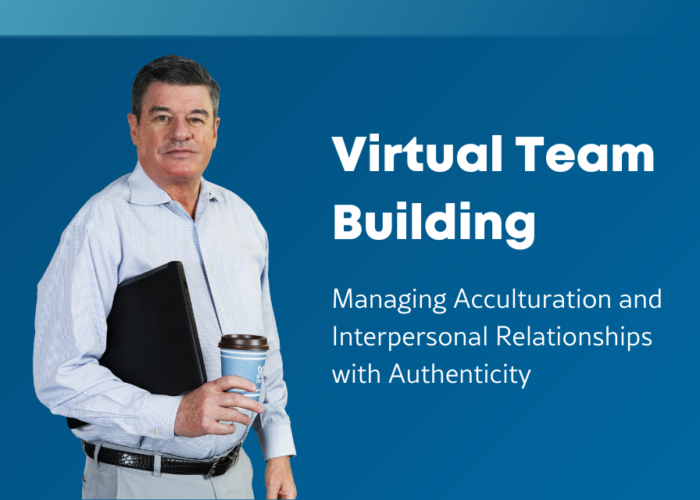THE CONNECTED CAMPUS IS THE FUTURE
How will you align your IT resources to create it?
The role of technology in higher education is expanding. Sped up by the COVID-19 pandemic, colleges
and universities of every size, in every location, are turning to technology to help redefine the way the educational experience is delivered. Higher education transformation is critical, especially for small and mid-sized schools, to overcome declining higher ed enrollment, the perceived lack of strong ROI (return on investment), and the competition from better resourced larger schools.
Blended learning offers a ray of hope. It enabled the reopening of schools safely during the pandemic and has the potential to make a college education more accessible, equitable, engaging, and effective over the long term. It is obliging administrators and IT leaders to buy in to diversify revenue, retain and graduate students, and open enrollment to different types and groups of students. Rather than view online learning as a replacement for in-person study, Apogee see its value in giving students of all backgrounds and ages greater flexibility and control over their educational experience.
But for schools to successfully unlock the value technology can provide in achieving their vision and goals, IT leaders must unlock the time necessary to think strategically and innovate. As operational challenges mount and short-staffed organizations manage through employee burnout, focusing on high-value initiatives remains elusive. The critical question is this: what can you do to align your IT resources toward your institution’s strategy for success?
IT operations: In-house or outsourced?
Some higher ed CIOs Apogee speaks to believe keeping campus IT operations in-house makes better business sense. The reasons they offer are strikingly similar. It’s less expensive. It allows for greater control. The myriad of unique operational tasks is best left to those with the institutional knowledge to address them. But these answers outline a strategy for ensuring the status quo, as opposed to propelling the organization and institution forward.
In fact, even the status quo may be in jeopardy. A recent PWC study highlights the effect “The Great Resignation” is having on IT teams. 65% of respondents report looking for a new position while 88% of executives note comparatively high turnover, adding “the competitive war for talent has never been more fierce.” Increasingly understaffed higher ed IT teams are working a growing list of projects and tasks and rapidly suffering burnout.
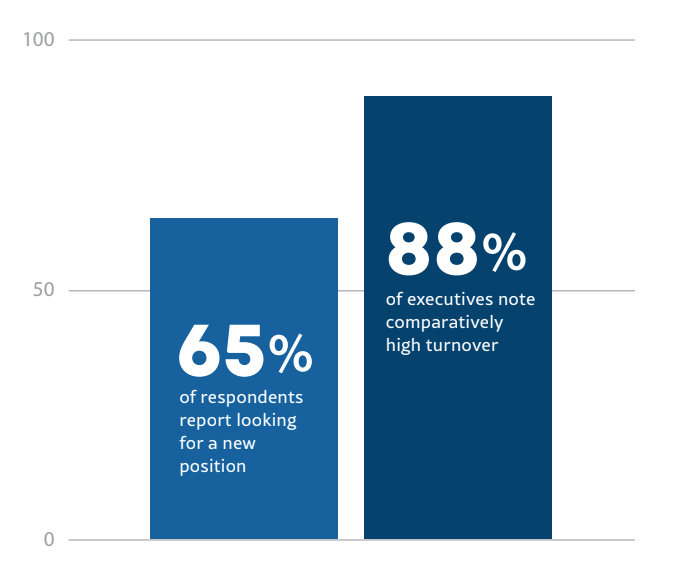
Repeatedly spending time and money training new employees on routine tasks while searching for employees to fill vacancies stifles innovation and transformation that could be taking place around cybersecurity, leveraging analytics for data-driven decision making, CRM projects to strengthen student recruitment efforts, and more. Without the talent and expertise required to think and act strategically – with the school’s vision of success as a focal point – the battle is often lost before it’s begun. Your best move? Start by benchmarking your IT organization against those of your competitors and close the most critical gaps first.
Dig a little deeper:
EDUCAUSE IT staffing insights
To help bring the process of benchmarking into sharper focus, Apogee engaged EDUCAUSE, the higher ed technology association with the largest community of IT leaders and professionals in the US, to conduct a custom analysis of IT staffing data from 2020 across 479 institutions surveyed. Apogee then engaged a data scientist to conduct further analysis to help us understand the potential implications for the overall productivity of higher education IT teams.
EDUCAUSE uses the IPEDS Institutional Full-Time Equivalent (FTE) in their calculations. To benchmark your campus with the greatest precision, please visit IPEDS here to obtain the numbers needed to calculate your school’s Institutional FTE number [See Fig 2].
Across all institutions offering bachelor’s degrees, the median IT staff per 1000 FTE is 9.7. If your staffing levels are above 10 per 1000 FTE, what challenges might be driving a higher level of staff compared to peer institutions? Is your networking staff aligned appropriately with the priorities of the institution? If your staffing levels are below 10 per 1000 FTE, what are some core areas that you can outsource to shift your existing human resources towards differentiation and innovation?
Calculate the Institutional FTE
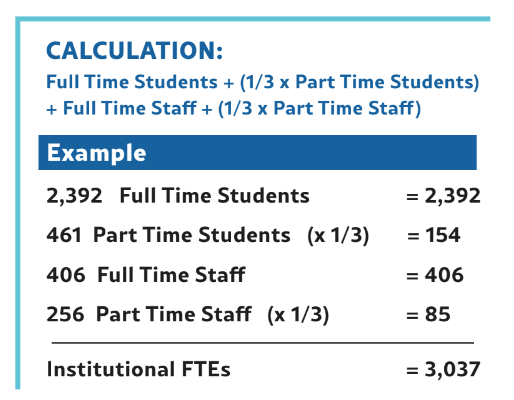
Median IT staff by functional area per 1000 FTE
Take a look at how IT staff are allocated across IT functional areas for all institutions and answer the following questions:
- How do you compare?
- How might you allocate your staffing needs to better align with strategic priorities?
- Which areas require more staff than the benchmark? Why do you think that is?
- Which areas are understaffed? How is understaffing inhibiting your ability to prioritize those projects that deliver the greatest long-term value?
- If you were to outsource one to two areas, what might those areas be?
- How could you redeploy staff to more impactful roles to increase employee retention?
Median IT Staff by Functional Area (2020) Per 1,000 FTE; All Institutions
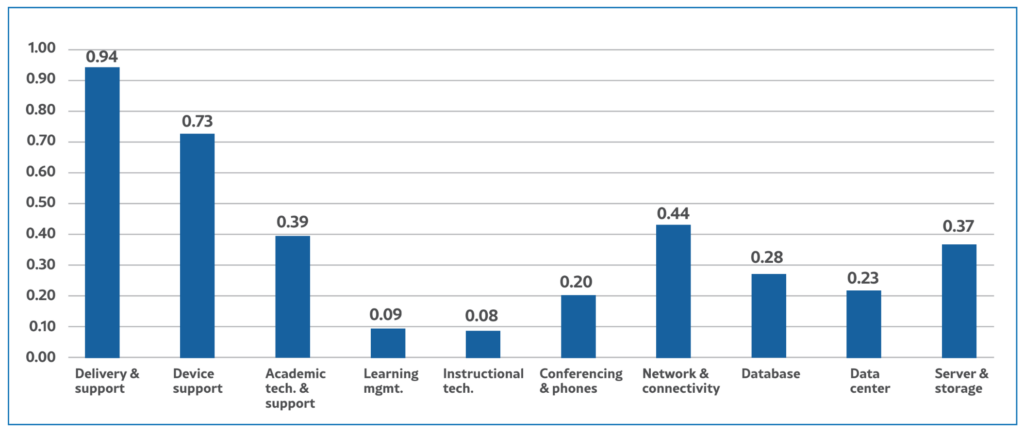
Now review the percentage of outsourcing by IT functional area. These include learning management, database, data center, network and connectivity, and server and storage. Does the breakdown of outsourcing by area surprise you? The results show that many institutions are trying to keep all areas in house. How might you be missing an opportunity to unlock time to focus on strategic priorities?Where do the opportunities exist to outsmart and out-innovate your competitors by breaking away from this resourcing model?
Outsourcing % by Area (2020)
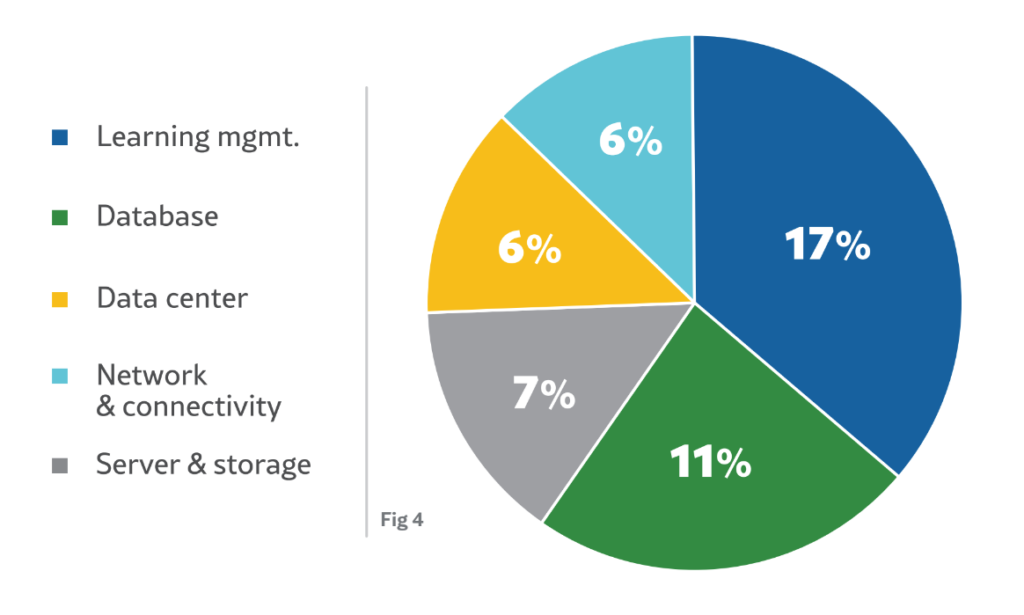
Break away from the status quo
Technology has come a long way since the days of break-fix IT. The harsh reality is that as roles are left unfilled and turnover rises, most internal IT teams aren’t equipped to keep up with the necessary pace of innovation. Small and often inexperienced IT staffs tasked with managing day-to-day operational challenges become reactive rather than proactive. As a result, critical infrastructure struggles to respond to the usage demands of students, faculty, and staff.
The consequences of this are interwoven. Shadow IT emerges. A lack of agility halts or slows innovation. Negative perceptions of IT as a university cost center, rather than strategic contributor to enrollment and retention, are perpetuated throughout campus. The question on the table then is this: what is IT really costing your institution?
Shadow IT
Shadow IT happens when well-intentioned employees take technology matters into their own hands to do their jobs. They may purchase their own instant messaging app for their team or install a rogue router to get better Wi-Fi. But these good intentions come at a cost. Rogue routers can create connectivity issues for others, increasing the number of support calls. And then there’s the financial cost. Research from Everest Group indicates that shadow IT, while effectively decentralizing IT investment, also comprises 50% or more of IT spend.
Though the number is likely far higher given the prevalence of shadow IT across college and university campuses, EDUCAUSE data marks higher education IT spend at $1506 per institutional FTE. Add to that the cost of recruiting, hiring, and onboarding IT professionals to replace those you’ve lost, estimated in one benchmarking report at $4129 per hire, and the hidden costs are substantial.

Lack of agility
According to EDUCAUSE data, just over one in three IT professionals believe their campus is agile when it comes to technology investment. And it’s true many CIOs struggle with how to manage the daily operational challenges of their infrastructure while simultaneously adopting the cloud platforms and emerging technologies needed to drive better student experiences and outcomes.
But the problems often go beyond limited staffing. Organizations built around a traditional higher ed IT organizational profile may find they lack the internal knowledge and expertise to pursue high-value strategic priorities in a meaningful way. This is compounded by the effects of The Great Resignation and its influence over the IT industry in general, making finding the right people with the right set of skills an increasingly difficult task.
Lack of alignment

It’s essential for IT and the cabinet to better understand each other’s priorities, as well as the speed and direction in which both move. Aligning to strategic priorities helps close gaps across campus silos. It enhances employee engagement and, ultimately, enables deeper student outcomes, creating a more resilient and sustainable academic institution. Yet, getting a seat at the cabinet table remains a challenge for many CIOs.
This is despite the rapid and significant change forced upon IT organizations that cries out for cabinet-level discussion. Saddled with managing vendor complexity, integrating disparate systems, adopting emerging technologies alongside their legacy network and data center infrastructure, and overcoming budget constraints in the face of dwindling staffs and skill sets, CIOs must work to align campus leadership teams toward a compelling and sound technology investment strategy.
Shining light on hidden costs exposes challenges but also opportunity. Consider the benefits of properly balancing cost management with strategic investment in technology. Institutions with the focus and determination to do so open themselves up to wealth of possibilities, including differentiation from larger competitors and significantly enhanced enrollment and retention. Will you take the bold step of directing budget toward innovation and sustainability? What steps can you take to make this happen?.
Adopt a new approach: Managed IT Services
If you’ve previously dismissed the idea of outsourcing to a third-party provider because you believe your current IT structure is fine or because of concerns about cost, now is the time to reconsider. Leading CIOs redirect their resources and energy away from day-to-day operations and move them towards strategic activities that enable them to innovate in service of their institution’s mission.
IT can only become a value center and deliver innovative services when it confronts how much time and staff is being spent on day-to-day operations rather than strategic priorities. Successful CIOs solve these challenges by partnering with a managed technology services provider (MSP) to gain a deep bench of partner support.

Focus on core objectives
The right managed IT services partner wears your colors, understands your goals, and knows your culture, helping you trade common operational tasks for time to focus on more strategic activities.

Get the expertise you need
New technology means new problems — problems your existing IT team does not have the knowledge or experience to solve. An MSP has the specialists who can keep your network and systems modernized and unlock their full potential so you can focus on innovation.

Transfer risk and lower costs
An MSP takes on the risk and eliminates the cost of hiring and training new IT operations staff. An MSP provides the ability to redeploy your staff to better roles. Best of all, with SLAs (Service Level Agreements) tailored to your campus, there are no unexpected service costs and no risk.
Choose the right managed IT services provider.
Once you begin to explore outsourcing, choosing the right managed services provider becomes an essential task. Many MSPs will be interested in your business, but a far smaller number of those will be the right fit for supporting the widely varying demands of your campus stakeholders.
Know what you’re buying.
This sounds like common sense advice but misunderstandings about the dynamics of your campus or the specific requirements for your technology infrastructure frequently lead to unsuccessful partnerships. In any discussion with a potential provider, be as specific and clear as possible about your needs. Understand where the starts and stops of responsibilities exist to ensure accountability. Bring your “what-if” scenarios and listen for variations in approaches to best align with your culture and need. This will make comparing MSPs easier and more straightforward, while dramatically increasing the potential for success post-deployment.
Look for higher education expertise.
Many MSPs will claim they understand your unique IT infrastructure demands. It’s your job to sift through the noise and get to the facts. Effectively answering the demands of administrators, staff, faculty, and students requires deep experience with the intricacies of higher education. From infrastructure design to support, you’ll need a partner who can act as an extension of your team without hand-holding from you or your staff.
Choose funding models that work with you.
MSPs with deep experience in higher education understand the budget and funding challenges IT leaders face. In evaluating any MSP, look for funding models that take your specific challenges into account, that work with you instead of against you, and include rock-solid SLAs reflective of the higher ed experience the provider brings to the table that help ensure project success.
Streamline project deployment in 3 steps
Nothing is more disappointing than to make a well-reasoned decision for the betterment of your institution, only to see the results of your hard work stymied by unforeseen challenges once a decision is made. Through our two decades of experience in higher ed, we’ve uncovered three important inflection points in the buyer’s journey that, when accounted for in your planning, help speed the process from decision to project implementation. You should also consider the competitive cost of being slow to innovate as well as the opportunity cost of not addressing inefficiencies year after year.
While each of these steps in the process represent discrete points in the purchasing path, they all are equally essential with the power to make or derail a successful deployment. It’s important to think about each of them early and often, rather than delay addressing them, even as they may not each be critical to getting to a purchase decision.
1. The Funding Safari

Customers often tell us that the mechanics of organizing project funding internally slowed progress toward acquisition and deployment more than they’d initially expected. While it’s Apogee’s approach to address this issue up front with potential customers, it’s critical to think through the internal funding problem early.
Thinking through funding sources in advance seems obvious, yet many organizations delay this exercise too long, creating unnecessary delays in project progress. As early as possible, determine where your funding will come from. A centralized administrative budget? From an auxiliary service like housing? From your IT operations budget? Knowing the answer ahead of time can resolve issues before they happen.
In addition to properly identifying your funding sources early, you’ll also want to be prepared to accurately compare the costs of managing your own campus network to those of working with a managed services provider. This often requires a closer examination and reframing of your existing IT investments – and not limited to those occurring within the last couple of years.
For example, if you spent $500,000 in networking hardware five years ago but still rely on that investment today to power your network, then that investment should be included in your comparison. You’ll also need to consider costs beyond the equipment itself, including network design, circuits, installation costs, IT staff time, annual maintenance and support, licensing, and other associated costs.
DIY project management of networking infrastructure projects take up a tremendous amount of IT staff time and energy, particularly given the short windows that are open for big network upgrades in the academic calendar. If examining your investments in this kind of detail and sharing it with your potential provider is too painful, you may well already have the answer to whether outsourcing is right for you.
2. Advocating for a Better Way
Beyond the internal selling that goes into securing funding, there are often constituencies for whom the switch to managed services provider creates change. The buy-in of these groups or teams isn’t required to reach a purchase decision, but they can play a significant role in the success of a deployment (e.g., Housing for a residential Wi-Fi network or Faculty for a campus-wide wireless network).
The error many organizations make is to delay consulting these stakeholders until a decision is made – occasionally even after the purchase is complete. Feeling left out of the process, these groups or organizations may passively resist the change in small but meaningful ways (e.g., poor attendance at training events, slowness to adapt to new procedures or policies), placing a preventable and unnecessary burden on implementation. Waiting until a contract is signed to engage can grind deployment to a halt.
For many small community-based colleges and universities, identifying potentially impacted constituencies extends beyond the institution itself. What are the reduction in force implications, real or perceived, of the change to an MSP? Anticipating these types of concerns can help you get out in front of them early, reassuring those potentially impacted (or those who perceive they may be) wherever they are located.
3. Purchasing
Continuing with our theme of engaging stakeholders early and often, Apogee recommends doing the same with procurement representatives. Understanding the purchase process at your academic institution and being as open and transparent about that process with your prospective partner can help overcome any last-minute challenges as you work to close an agreement. What is the procurement path at your school? Does your school president or CFO need to sign off? Will an RFP be required? Are there paths to sole sourcing, piggybacking off of existing contracts, or participating in a shared service agreement within a system or with partner schools?
If the answer to the RFP question is yes, it’s important to engage your managed services provider to help shape the details of the RFP itself – this will ensure all the identified needs will be met. A generalized RFP will yield multiple responses from vendors with little to no knowledge of what is truly needed, while creating more work for you and your team to cull those that aren’t a fit. Likewise, ensuring that specific equipment or services essential to the success of your project are included in the RFP is equally important. While the RFP process can generate lower cost proposals, precious time is taken up to sort through the contenders and pretenders. A strong, experienced provider can help mitigate this.
Meanwhile, engaging procurement leads early creates greater potential for meeting your timeline expectations. Like any other important stakeholder, procurement team members don’t like to be blindsided. Ensuring they’re up-to-speed with your project objectives and timeline goals up front creates tremendous momentum, enough to carry your project through quickly and efficiently once an agreement is reached.
Managed IT services unlock time for innovation
Unlocking the time your IT organization needs to innovate and contribute to high-value strategic priorities demands a strategy of its own. As CIOs across higher education grapple with the challenges of balancing operational responsibilities with the expanding role of technology in driving enrollment and retention, managed IT services offers a way forward.
But making the strategic decision to partner with an MSP isn’t the end of the process; rather, it’s just the beginning. Plan and prepare to ensure you get the right partner fit and you get to project deployment as fast and efficiently as possible.




